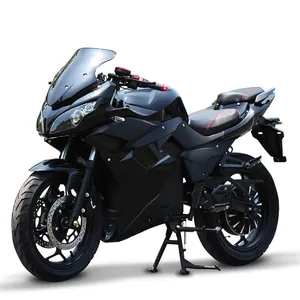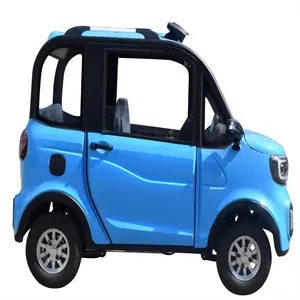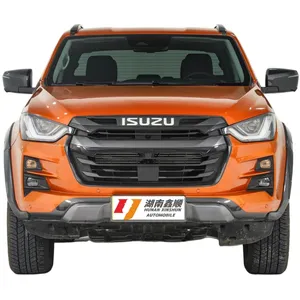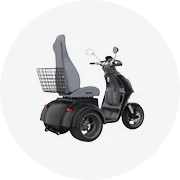Популярное в вашей отрасли






Toyota Corolla 1,2 т 2023 бензиновый автомобиль Toyota Corolla, продажа подержанных автомобилей в США
1 024 587,00 ₽ - 1 127 045,70 ₽
Минимальный заказ: 1 шт.






Автозапчасти для кузова, оптовая продажа, передний бампер автомобиля, передний гриль автомобиля для Toyota Camry 2015 2018 весь год для toyota Camry
2 049,18 ₽ - 3 073,77 ₽
Минимальный заказ: 10 шт.







Оптовая продажа, прочные чехлы на автомобильные сиденья
6 557,36 ₽ - 7 991,78 ₽
Минимальный заказ: 50 компл.







YABO 14,4 В 6500 мАч 100% Новый оригинальный Nimh перезаряжаемый Lexus Гибридный аккумулятор для Toyota Camry Xv40 Xv50
6 147,53 ₽ - 8 196,70 ₽
Минимальный заказ: 1 шт.







Уплотнительная резиновая прокладка для окон автомобиля toyota corolla
870,90 ₽ - 1 229,51 ₽
Минимальный заказ: 10 компл.







Китайские подержанные автомобили для продажи, новые энергетические автомобили, электромобиль Toyota Corolla Cross, гибридный Camry RAV4 UNIV UNIK Toyota Corolla Cross
1 013 111,63 ₽ - 1 320 487,73 ₽
Минимальный заказ: 1 шт.






KINGSTEEL японский автомобиль для TOYOTA CAMRY COROLLA PRIUS VIOS YARIS CROWN AVALON автозапчасти OEM новые автозапчасти
512,30 ₽ - 2 049,18 ₽
Минимальный заказ: 10 шт.





Лидер продаж, китайский бренд camry 2.0L 2.5L бензин, новые цены на автомобили
1 311 471,36 ₽ - 1 454 913,54 ₽
Минимальный заказ: 1 шт.






2024 2023 новый автомобиль Camry Tayota Trade Tayota Toyata Camry 2.5hg 2.5he Гибридный седан 2,5 q 2.5q 2.5hq 2023 автомобиль для продажи
1 608 396,68 ₽ - 2 415 873,69 ₽
Минимальный заказ: 1 компл.






Быстрая продажа подержанного 2023 T o y t a Camry TRD V6 роскошный автомобиль
286 884,36 ₽
Минимальный заказ: 1 шт.
Связанные запросы:
автомобильная камера hdавтомобильная камера x3000инфракрасная автомобильная камера h.264автомобили camaraавтомобильная камера 1080pкамера toyotaавтомобильная камера sonyавтомобильная камера 2 hdавтомобильная камера 3gдвойная автомобильная камера x3000автомобильная камера q7автомобильная камераавтомобильная камера южной кореиавтомобильная камера заднего видаавтомобильная камера 2







2024 недорогие автомобили Toyota Новые автомобили Toyota Camry 5 мест бензиновые автомобили
1 721 306,16 ₽ - 1 926 223,56 ₽
Минимальный заказ: 1 шт.




2023 новые автомобили Toyota Camry Самая низкая цена 60L Ev автомобиль Новый энергетический Гибридный бензиновый автомобиль
910 652,93 ₽ - 1 024 587,00 ₽
Минимальный заказ: 1 акр




Подержанные автомобили toyota camry Автоматическая Золотая 2009 2010 2011 2012 для продажи по лучшей цене на продажу
102 458,70 ₽ - 133 196,31 ₽
Минимальный заказ: 1 шт.






BestSource Gac 2020 Toyota Camry 2,5 г роскошная версия седан Подержанный бензиновый автомобиль Toyota бензиновые автомобили Rwd подержанные автомобили
870 898,95 ₽ - 1 075 816,35 ₽
Минимальный заказ: 1 шт.






Бензиновый автомобиль To-yota Camry 2023 2.0GVP ведущая СЕРИЯ Гибридный автомобиль Горячая дешевая цена на yota Camry 2023 новый бензиновый автомобиль
881 189,91 ₽ - 1 661 310,45 ₽
Минимальный заказ: 1 шт.






Toyota Camry 2024 гибридные бензиновые автомобили роскошный гибридный седан электрический автомобиль EV
870 898,95 ₽
Минимальный заказ: 1 шт.






Китайские проверенные поставщики подержанных автомобилей Toyota Camry гибридные автомобили хит продаж в мире подержанных автомобилей новой энергии
2 202 862,05 ₽ - 2 612 696,85 ₽
Минимальный заказ: 1 шт.






2024 высокопроизводительный автомобиль Toyota Camry с объемом 2,0 л бензиновый Toyota Camry б/у
2 438 517,06 ₽ - 2 612 696,85 ₽
Минимальный заказ: 1 шт.

Срочные продажи, хорошие цены, используемые 2020 автомобилей TOYOTA CAMRY SE для продажи
174 179,79 ₽
Минимальный заказ: 1 шт.






TOYOTA Camry Гибридный 2.5L 0 км 2022 2.0E Probox Элитная светодиодная камера электрическая ткань седан автоматический люк на крышу подержанных автомобилей Camry 2016 левый
1 721 306,16 ₽ - 1 926 223,56 ₽
Минимальный заказ: 1 компл.






2022 2023 новый автомобиль Camry Tayota Trade Tayota Toyata Camry 2.5hg 2.5he Гибридный седан 2,5 q 2.5q 2.5hq 2023 автомобиль для продажи
1 359 524,50 ₽ - 2 343 128,02 ₽
Минимальный заказ: 1 шт.






2023 модель Toyota Camry Sedan 4-дверный 5-местный Новый трендовый автомобиль по заводской цене, используемый для различных целей
1 741 797,90 ₽ - 1 905 731,82 ₽
Минимальный заказ: 1 шт.






Китай, новый автомобиль Camry Toyot A Trade, 0 км, использованный новый самый долговечный бензиновый автомобиль Toyota Camry 2.5Q для продажи
1 946 715,30 ₽ - 2 123 456,56 ₽
Минимальный заказ: 1 шт.






2021 Toyota Camry 2,0 г Deluxe Edition топливный Подержанный автомобиль Toyota Camry седан для продажи
1 241 799,45 ₽ - 1 330 938,52 ₽
Минимальный заказ: 1 шт.






Японский автомобиль для TOYOTA CAMRY COROLLA PRIUS VIOS YARIS CROWN AVALON автозапчасти запчасти OEM новый repuestos de autos
10,25 ₽
Минимальный заказ: 10 шт.






2024 Toyata Camry Лидер продаж, бензиновый автомобиль 2,0 2,5 гибридный автомобиль EV Toyota Corolla Camry, Подержанный автомобиль по низкой цене, распродажа
1 157 783,31 ₽ - 1 383 192,45 ₽
Минимальный заказ: 1 шт.






Прямая Продажа с завода, автомобили TOYOTA Camry, 4-колесный новый бензиновый автомобиль, Подержанный автомобиль и цена
1 078 890,12 ₽ - 1 120 385,89 ₽
Минимальный заказ: 1 шт.






2022 Camry 2.5S Fengshang Edition Toyota Camry новые автомобили или подержанные автомобили
1 229 504,40 ₽ - 1 383 192,45 ₽
Минимальный заказ: 1 компл.






2023 Лидер продаж, 4-дверный 5-местный семейный седан 2.0L 2.5L 205 км/ч 210 км/ч/hToyota Camry бензиновый автомобиль для продажи
922 128,30 ₽ - 2 797 122,51 ₽
Минимальный заказ: 1 шт.






Высококачественный автомобильный передний бампер для японского автомобиля Camry 2007-2009
5 122,94 ₽ - 7 172,11 ₽
Минимальный заказ: 10 шт.






2023 Toyota Camry 2.5q Ultimate Edition высокопроизводительный автомобиль на топливе 210 км/ч новые автомобили
1 832 986,15 ₽ - 2 049 071,55 ₽
Минимальный заказ: 1 шт.






Роскошный интерьер Toyota Camry 2,0 Gvp 2023 седан бензиновый автомобиль Toyota Camry автомобиль новый бензиновый автомобиль
2 247 738,97 ₽ - 2 452 656,37 ₽
Минимальный заказ: 1 компл.






Горячая Распродажа Toyo ta новый бензиновый автомобиль Camry бензиновый 2024 модель нового автомобиля
1 997 944,65 ₽ - 2 151 632,70 ₽
Минимальный заказ: 1 компл.






2024 Тойот-Королла, автоматическая Королла 2013 Тойота Ярис Камри, новые автомобили для продажи Тойот-Королла
1 229 504,40 ₽ - 1 424 175,93 ₽
Минимальный заказ: 1 шт.






Toyota camry 2003 2004 2006 2007 2008 2009 2010 2011 2012 2014 2015 2017 2018 2021 2023 б/у автомобиль toyota camry б/у
409 834,80 ₽ - 614 752,20 ₽
Минимальный заказ: 1 шт.






Солнцезащитный козырек серого цвета бежевого цвета для автомобиля TOYOTA Camry 2007-2011 с левой стороны и правой стороны с Люком в крыше и светом 74320-06780-B0
512,30 ₽ - 1 024,59 ₽
Минимальный заказ: 10 шт.






Электрический автомобиль Camry горячая Распродажа Китай HAVAL H6 H9 Crown ev автомобиль купе haval белый внедорожник changan Cs85 подержанные автомобили
368 646,41 ₽ - 573 666,27 ₽
Минимальный заказ: 1 компл.
Самые популярные категории
О автомобили camry
Alibaba.com предлагает автомобили camry, 118124 видов. Вам доступны различные автомобили camry, в том числе макферсона, мульти-link и двойной в форме "косточки желаний". Вы можете выбрать различную упаковку: евро vi, euro v и евро характеристическая вязкость полимера автомобили camry. Кроме того, можно выбрать кожаный чехол автомобили camry. Такие автомобили camry могут быть 1-25000 миль.































